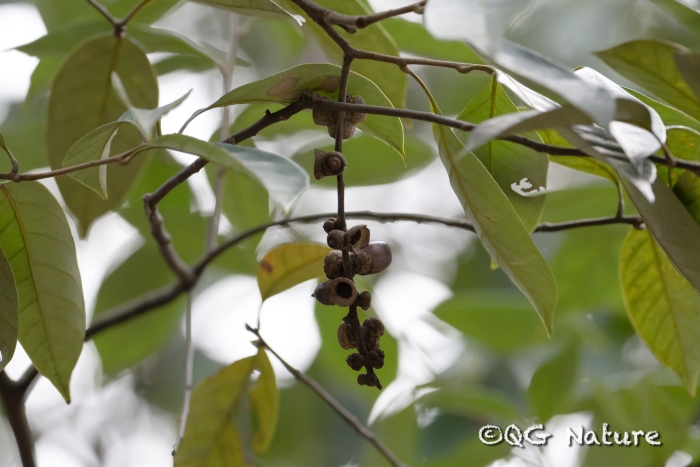Japanese Oak
(Lithocarpus glaber)
Japanese Oak (Lithocarpus glaber)
/
/

Wang.QG
CC BY 4.0
Image By:
Wang.QG
Recorded By:
Copyright:
CC BY 4.0
Copyright Notice:
Photo by: Wang.QG | License Type: CC BY 4.0 | License URL: http://creativecommons.org/licenses/by/4.0/ | Rights Holder: Wang.QG | Publisher: iNaturalist | Date Created: 2023-02-19T11:29:53-08:00 |

























Estimated Native Range
Summary
Lithocarpus glaber, commonly known as Japanese Oak, is an evergreen tree native to warm temperate forests in Japan, China, and Taiwan. It is a member of the beech family, Fagaceae, and can grow up to 20 meters in height with a broad, rounded crown. The Japanese Oak has a smooth, grey bark and its leaves are leathery, with a glossy upper surface and a dull, paler underside. The small, inconspicuous flowers are followed by acorn-like nuts that are seated in a woody cupule. Flowering typically occurs in summer.
Japanese Oak is valued for its attractive, dense foliage and is often used in urban settings, parks, and large gardens. It is relatively low-maintenance, requiring little pruning. This species prefers well-drained soils and can tolerate a range of soil types, from acidic to slightly alkaline. It is best suited to full sun or partial shade conditions. While not commonly used for its timber outside of its native range, the wood is hard and durable. In terms of potential problems, Lithocarpus glaber is generally disease-resistant but may occasionally suffer from root rot if planted in poorly drained soils.CC BY-SA 4.0
Japanese Oak is valued for its attractive, dense foliage and is often used in urban settings, parks, and large gardens. It is relatively low-maintenance, requiring little pruning. This species prefers well-drained soils and can tolerate a range of soil types, from acidic to slightly alkaline. It is best suited to full sun or partial shade conditions. While not commonly used for its timber outside of its native range, the wood is hard and durable. In terms of potential problems, Lithocarpus glaber is generally disease-resistant but may occasionally suffer from root rot if planted in poorly drained soils.CC BY-SA 4.0
Plant Description
- Plant Type: Tree
- Height: 20-30 feet
- Width: 10-15 feet
- Growth Rate: Slow
- Flower Color: Yellow
- Flowering Season: Spring
- Leaf Retention: Evergreen
Growth Requirements
- Sun: Full Sun
- Water: Medium
- Drainage: Medium
Common Uses
Low Maintenance
Natural Habitat
Warm temperate forests in Japan, China, and Taiwan
Other Names
Common Names: Japanese Stone Oak, Pasania Tree, Ke, Shiribukagashi, Shii Tree
Scientific Names: , Lithocarpus glaber, Kuromatea glabra, Lithocarpus glaber subsp. obtusiglans, Lithocarpus glabra, Lithocarpus inversus, Lithocarpus thalassicus, Pasania glabra, Pasania sieboldiana, Pasania thalassica
GBIF Accepted Name: